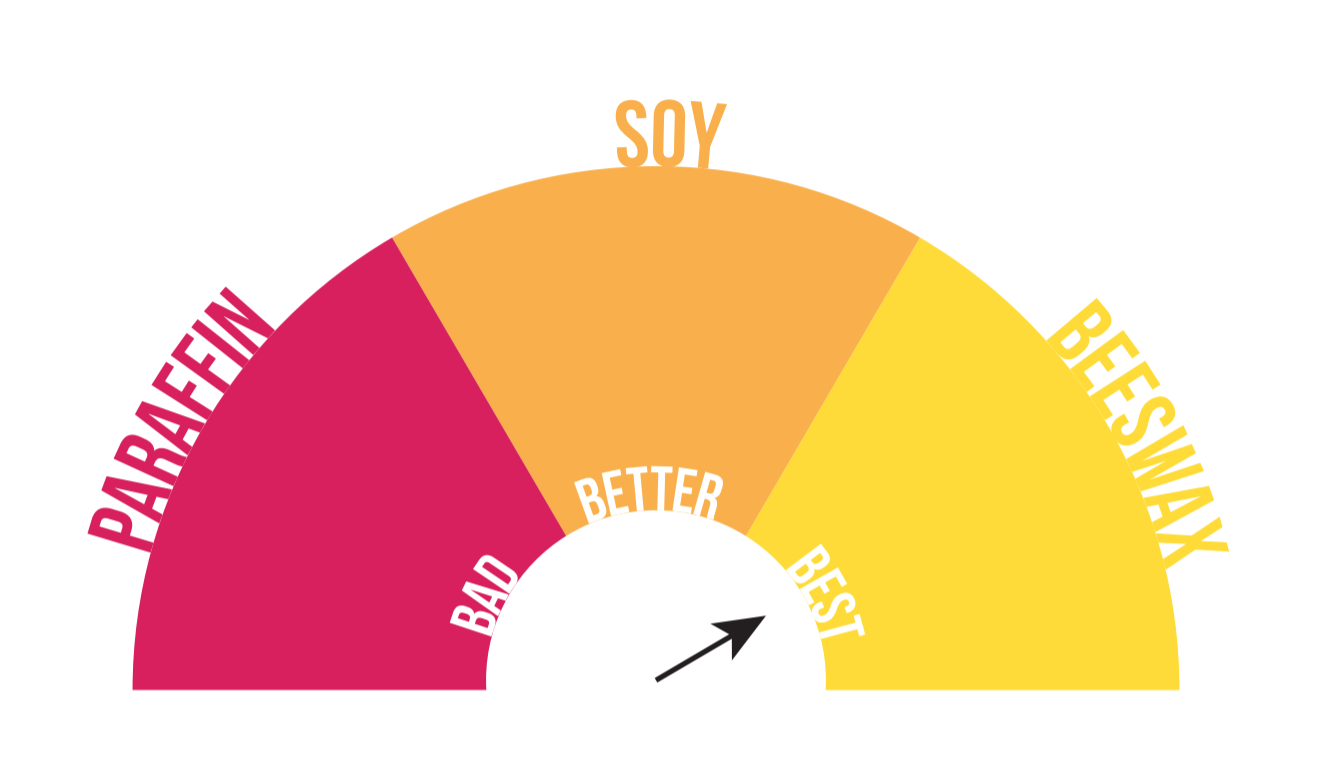Safe Candle Guide
by CELINE VARTANY
Candles are a great way to add some decorative charm and make your living space warm and inviting. They can help you relax after a long day, create an ambient environment, and even bring back memories through different seasonal scents. However, it isn’t always clear whether or not candles are safe for breathing; many of us don’t even consider the ingredients before buying and burning them. Awareness of the potential hazards and a greater effort to be more selective with our candles can make a positive impact on perhaps an overlooked aspect of our health.
What makes them unhealthy
One of the toxins in candle wax that contribute to bad air quality is paraffin. Paraffin is used to make candles because of its low cost and convenience. However, burning it releases toxic chemicals that can be harmful to our respiratory health, especially in poorly-ventilated rooms. [1] A case study that looked at a particularly extreme instance of candle exposure in a shrine even found that vaporized paraffin from cheap candles played a huge role in fatty lipid accumulation in the lungs, resulting in a special kind of pneumonia. [2] Paraffin and other toxins in candles can be even more serious “irritants” for people with asthma and other respiratory sensitivities, due to the combined effect of the smoke and scent. [3]
What to look for
In the interest of keeping candles around and not banishing them from our lives altogether, there are a few tips and tricks to keep in mind when buying your next candle.
Soy
Try to find candles that are made completely of soy. Soy has unique nutrients that have even been found to reduce the harmful effects of radiation-based toxicity in cancer-related treatments, especially in lung tissue. [4] Watch out for “soy blend” candles, which often include a significant amount of paraffin. Also, stay away from candles that do not have a clear list of ingredients.
Beeswax
Also a natural product, beeswax is a vitamin-rich (and even slightly antibacterial) compound that serves as an excellent ingredient for both beauty/skin products and candle wax. [5] Even cleaner than soy, beeswax candles are slightly expensive, but are definitely one of the safest options available in the market. Most smell subtly of honey or are lightly scented with essential oils. Again, make sure to read the ingredients label to ensure that the candle does not include toxins.
Made in America
Health regulations in manufacturing are generally stricter and better-enforced in North American factories. So when in doubt, avoid imported and super-cheap brands.
Maintenance and more tips
Make sure to regularly trim the wicks of your candles to about ¼ inch, and follow the instructions for the length of burning (usually no more than 4 hours). Also, prioritize a well-ventilated space for good air circulation, and be aware of any respiratory irritation or discomfort. Happy relaxing!
References ▾
- “Preventing Paraffin-Related Injury.” J. Inj. Violence Res. (2009).
- “A case of lipoid pneumonia caused by inhalation of vaporized paraffin from burning candles.” Respir Med Case Rep. (2016).
- “Types, frequency and impact of asthma triggers on patients’ lives: a quantitative study in five European countries.” J Asthma. (2014).
- “Radiation-Induced Esophagitis is Mitigated by Soy Isoflavones.” Front Oncol. (2015).
- “Evaluation of Beeswax Influence on Physical Properties of Lipstick Using Instrumental and Sensory Methods.” Evid Based Complement Alternat Med. (2016).







